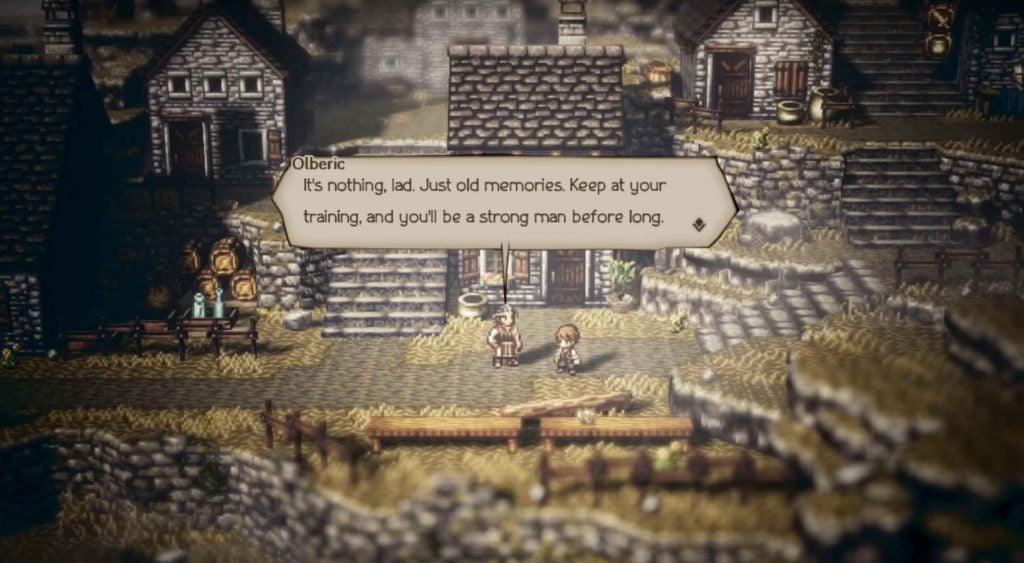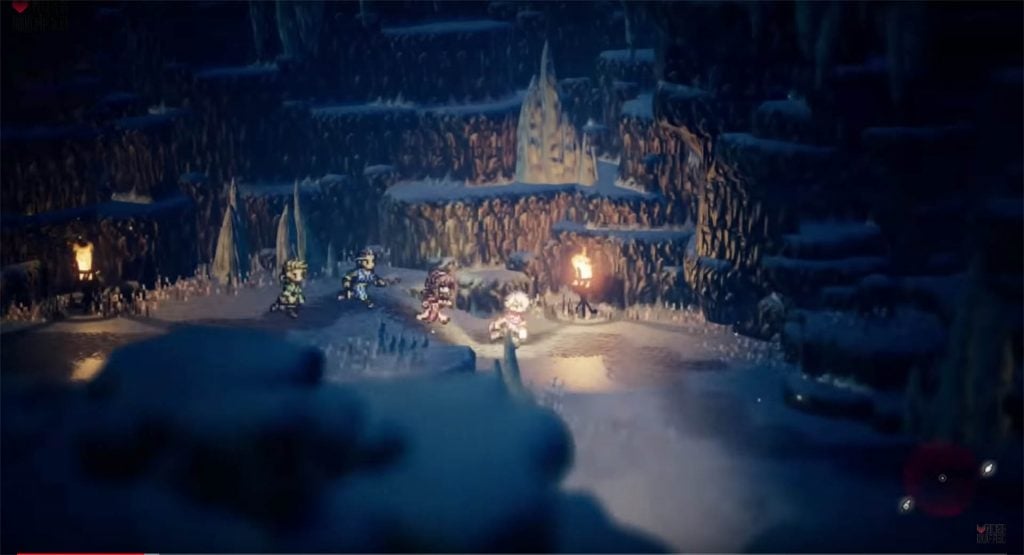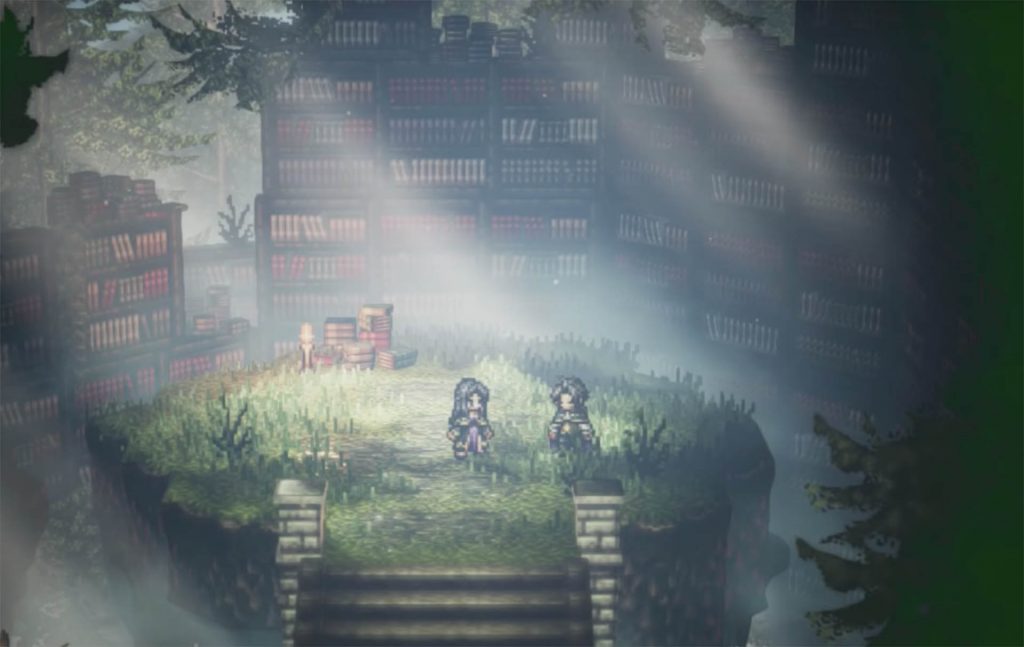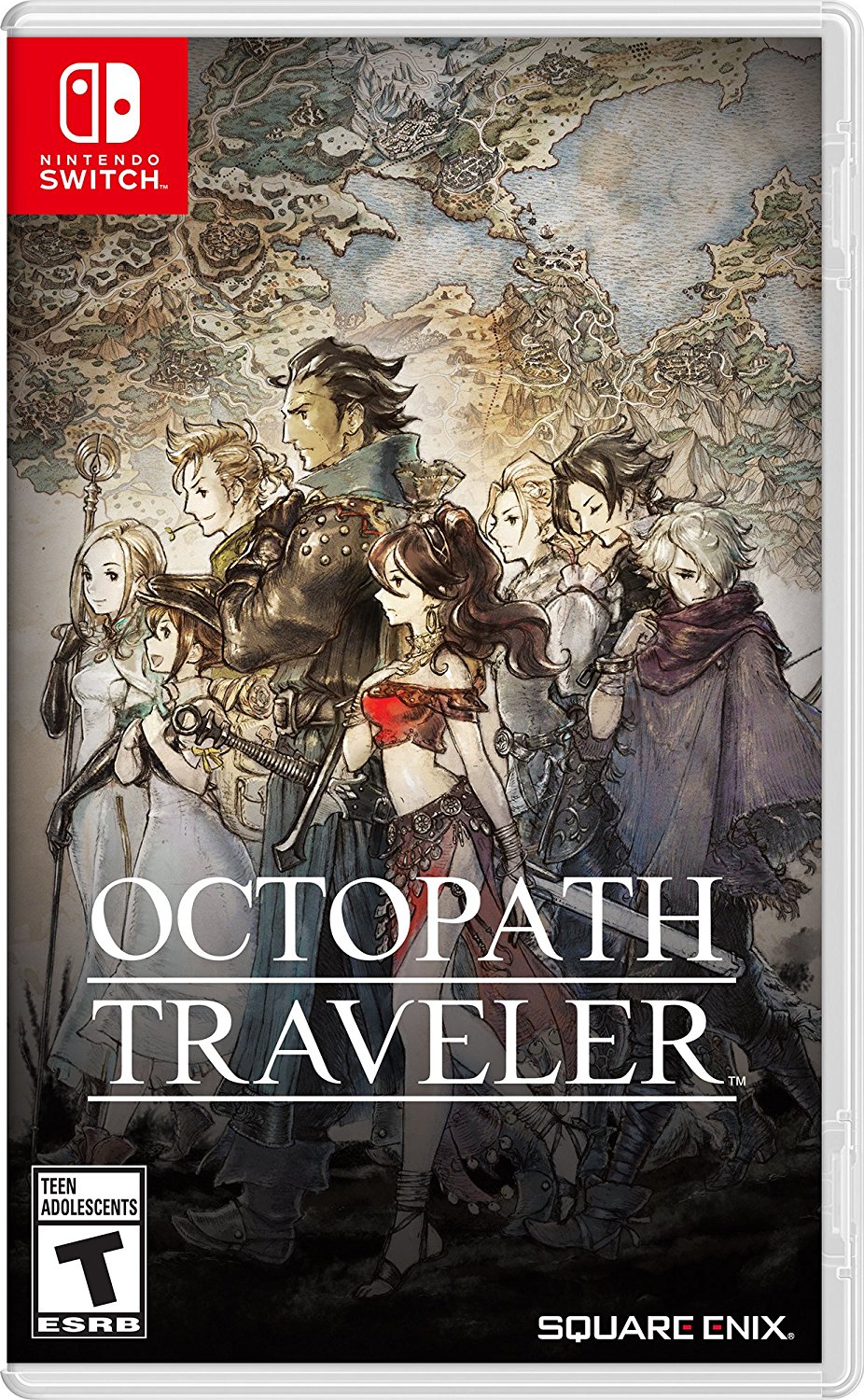Hello, and welcome back to our review of Octopath Traveler! Last time we covered the beginning of the game and the ground level of its various mechanics, including story, gameplay, and aesthetic. This time we’ll be diving in a bit more deep into the various aspects, and exploring the little intricacies that are keeping the game chugging strong even at the 50 hour mark.
An experience full of character
As previously explored, the game does not have a central storyline, instead having a separate plot for each of its eight distinct protagonists. As mentioned, I enjoyed the start of each story, even if they were a tad archetypal, because they did a good job establishing character and motivation, or at least piquing interest to some degree. And I would be lying if I said I wasn’t still enjoying the story up to this point.
As the game has gone on and I’ve reached the end of Chapter 3 with each party member, however, I’ve begun to feel a somewhat divergent quality in terms of writing. The more simplistic storylines — Tressa and Alfyn’s, for example — tend to play out a bit better due to their focus on character building and discovery, while some of the more dramatic ones — Primrose’s comes to the forefront — swerve a bit too much into shock and awe with more predictably unpredictable plot twists and spotty foreshadowing. While there have been some truly great moments (Olberic and Ophilia’s stories both had moments that prompted an emotional rise, if only for an instant), it’s difficult to prescribe the plots as a whole as consistent in quality.

While the narratives may zig-zag, the characters continue to be quirky and compelling, thanks to the addition of party chat from Chapter 2 on. Depending on who you’ve got in your party you’ll get little one-on-one chats pertaining to current events: whether it be good natured ribbing, personal advice, or even awkward flirting. (Ophilia and H’aanit are totally into each other and I will not hear otherwise!)
These chats, for what they are, are simply wonderful — but they also belie just how little interaction there is between the characters otherwise. Stories always play out as if the protagonist is alone, which works fine in certain circumstances but creates plotholes or contrivances in another. Not to mention just a little party interaction and presence would add flavor and investment. While I’m willing to suspend disbelief to a point, there are times when I was brought out of the experience as a result. If there was just a bit more cohesion, the entire game would benefit.
Sidetracked by role playing
While the main quests may be a mixed bag, Octopath Traveler’s side quests are a consistent highlight, and manage to be continuously engaging and interesting. Quest givers will moan of whatever issue they’re facing, and the way in which you solve it is up to you. There’s not waypoint marker, no directions, no glaring sign telling you “here’s what you do, dummy.” You have to read, explore, and pay attention to townspeople and your surroundings in order to solve things. More than most other RPGs I’ve seen, Octopath requires you to actually pay attention to flavor text, incidental dialogue, and other minutiae in order to devise what you need to do.

The method by which you’ll solve problems is one of the game’s key features, Path Actions. Each character has an action that allows them to either guide people (Ophilia & Primrose), acquire information (Cyrus & Alfyn), obtain items (Tressa & Therion), or beat bystanders up (Olberic & H’aanit). In addition, each action is characterized as either “Noble” or “Rogue” — Noble actions can be done so long as you’re of the right level (or in Tressa’s case, with enough cash), while Rogue actions can be done at any time with a percentage chance of failure. Fail enough times and your reputation will be tarnished, leaving you unable to interact with the townsfolk until you pay the barkeep to spread good rumors about you.
The flexibility in how you accomplish side quests is a big part of the game. While it seems that some have a more rigid solution (requiring one particular piece of information, or one specific item), the fact that you have options in how you accomplish those goals adds the option for self-imposed challenges or limitations. Want to only accomplish things nobly? Or pilfering every last item you can? What if you just want to smack every NPC in your way upside the head? The freedom of choice is wonderful, and creates a great amount of replayability.
Career choices
While each playable character has their base skillset, they also have access to an assortment of their peers’ abilities in the form of Jobs. Upon reaching particular shrines dotted throughout Orsterra, you can get access to a character’s job, allowing others to don their roles — and their clothes. Want to make the petit Tressa a burly warrior? Want to have bony Cyrus put on furs and become a hunter? Or let the serious Therion adopt a risqué outfit as a dancer? The possibilities are all there, and allow you to customize your party how you’d like.

At least… to a point. Unlike many other games with such a system, Octopath Traveler only lets one character use each Secondary Job at a time. This means that you can never run more than two characters with the same skillset. Furthermore, the only thing that carries between job classes is passive Support Skills — you can’t utilize an entire library of moves all at once.
To some, this may seem like an unneeded shackling of potential interesting job combinations. But on a personal level, I greatly appreciate this condition — it forces you to experiment and diversify your party lineup rather than simply stacking your lineup with broken combos. The exponential growth in costs for skills also encourages switching up jobs often rather than just sticking with one set of outfits for half the game (though you can do so if you’re so inclined.) Combined with the game’s already excellent base allocation of skill and abilities, and you still have a wide range of options without being able to snap the game over your knee like some previous games with such a system. There are even some other classes obtainable late game that I can’t wait to get my hands on.
More to come
We still need to wrap up each character’s storyline and check out the mysterious final boss that has corners of the internet abuzz, so there’s still plenty more to talk about. While a couple of bumps on the road have started to make themselves known, I’m still enjoying the heck out of Octopath Traveler, and can still heartily recommend it to any still on the fence about it — especially if you’re a fan of the old school RPGs it emulates.
If you want a more detailed breakdown of my thoughts thus far, you can check out the first part of the review, or our previous series on the game’s demo. Until next time!
Leave a Comment

System: Nintendo Switch
Release Date: July 13, 2018
Categories: Role-Playing, Adventure
Publisher: Nintendo
Developer: Square Enix


